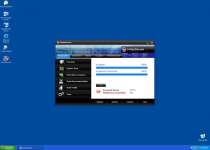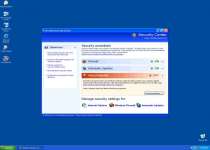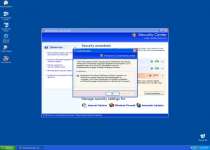InSysSecure
Posted: January 8, 2010
Threat Metric
The following fields listed on the Threat Meter containing a specific value, are explained in detail below:
Threat Level: The threat level scale goes from 1 to 10 where 10 is the highest level of severity and 1 is the lowest level of severity. Each specific level is relative to the threat's consistent assessed behaviors collected from SpyHunter's risk assessment model.
Detection Count: The collective number of confirmed and suspected cases of a particular malware threat. The detection count is calculated from infected PCs retrieved from diagnostic and scan log reports generated by SpyHunter.
Volume Count: Similar to the detection count, the Volume Count is specifically based on the number of confirmed and suspected threats infecting systems on a daily basis. High volume counts usually represent a popular threat but may or may not have infected a large number of systems. High detection count threats could lay dormant and have a low volume count. Criteria for Volume Count is relative to a daily detection count.
Trend Path: The Trend Path, utilizing an up arrow, down arrow or equal symbol, represents the level of recent movement of a particular threat. Up arrows represent an increase, down arrows represent a decline and the equal symbol represent no change to a threat's recent movement.
% Impact (Last 7 Days): This demonstrates a 7-day period change in the frequency of a malware threat infecting PCs. The percentage impact correlates directly to the current Trend Path to determine a rise or decline in the percentage.
| Threat Level: | 10/10 |
|---|---|
| Infected PCs: | 16 |
| First Seen: | January 8, 2010 |
|---|---|
| Last Seen: | January 10, 2019 |
| OS(es) Affected: | Windows |
 InSysSecure or InSys Secure, is a fake security application. InSysSecure was created to trick computer users into believing that InSysSecure is a program that will assist them with detection and removal of spyware parasites. InSysSecure is similar to other fake security programs such as PCProtectar, GuardPcs and APcDefender.
InSysSecure or InSys Secure, is a fake security application. InSysSecure was created to trick computer users into believing that InSysSecure is a program that will assist them with detection and removal of spyware parasites. InSysSecure is similar to other fake security programs such as PCProtectar, GuardPcs and APcDefender.
InSysSecure, after installed, can bombard a computer user with several misleading parasite warning messages and bogus system scan results. The use of InSysSecure can cause damage to a computer's system files which can greatly reduce system performance. It is recommended that InSysSecure be detected and safely removed with a spyware detection tool.
Use SpyHunter to Detect and Remove PC Threats
If you are concerned that malware or PC threats similar to InSysSecure may have infected your computer, we recommend you start an in-depth system scan with SpyHunter. SpyHunter is an advanced malware protection and remediation application that offers subscribers a comprehensive method for protecting PCs from malware, in addition to providing one-on-one technical support service.
* See Free Trial offer below. EULA and Privacy/Cookie Policy.
Why can't I open any program including SpyHunter? You may have a malware file running in memory that kills any programs that you try to launch on your PC. Tip: Download SpyHunter from a clean computer, copy it to a USB thumb drive, DVD or CD, then install it on the infected PC and run SpyHunter's malware scanner.
Technical Details
File System Modifications
Tutorials: If you wish to learn how to remove malware components manually, you can read the tutorials on how to find malware, kill unwanted processes, remove malicious DLLs and delete other harmful files. Always be sure to back up your PC before making any changes.
The following files were created in the system:InSysSecure.exe
File name: InSysSecure.exeSize: 1.63 MB (1635328 bytes)
MD5: e658b8985da235700ed8e5fdef5771c6
Detection count: 33
File type: Executable File
Mime Type: unknown/exe
Group: Malware file
Last Updated: January 8, 2010
setup[1].exe
File name: setup[1].exeSize: 360.96 KB (360960 bytes)
MD5: f3128e1dbe6040cbe5d9ba5a10ef8226
Detection count: 32
File type: Executable File
Mime Type: unknown/exe
Group: Malware file
Last Updated: January 8, 2010
More files









Leave a Reply
Please note that we are not able to assist with billing and support issues regarding SpyHunter or other products. If you're having issues with SpyHunter, please get in touch with SpyHunter customer support through your SpyHunter . If you have SpyHunter billing questions, we recommend you check the Billing FAQ. For general suggestions or feedback, contact us.